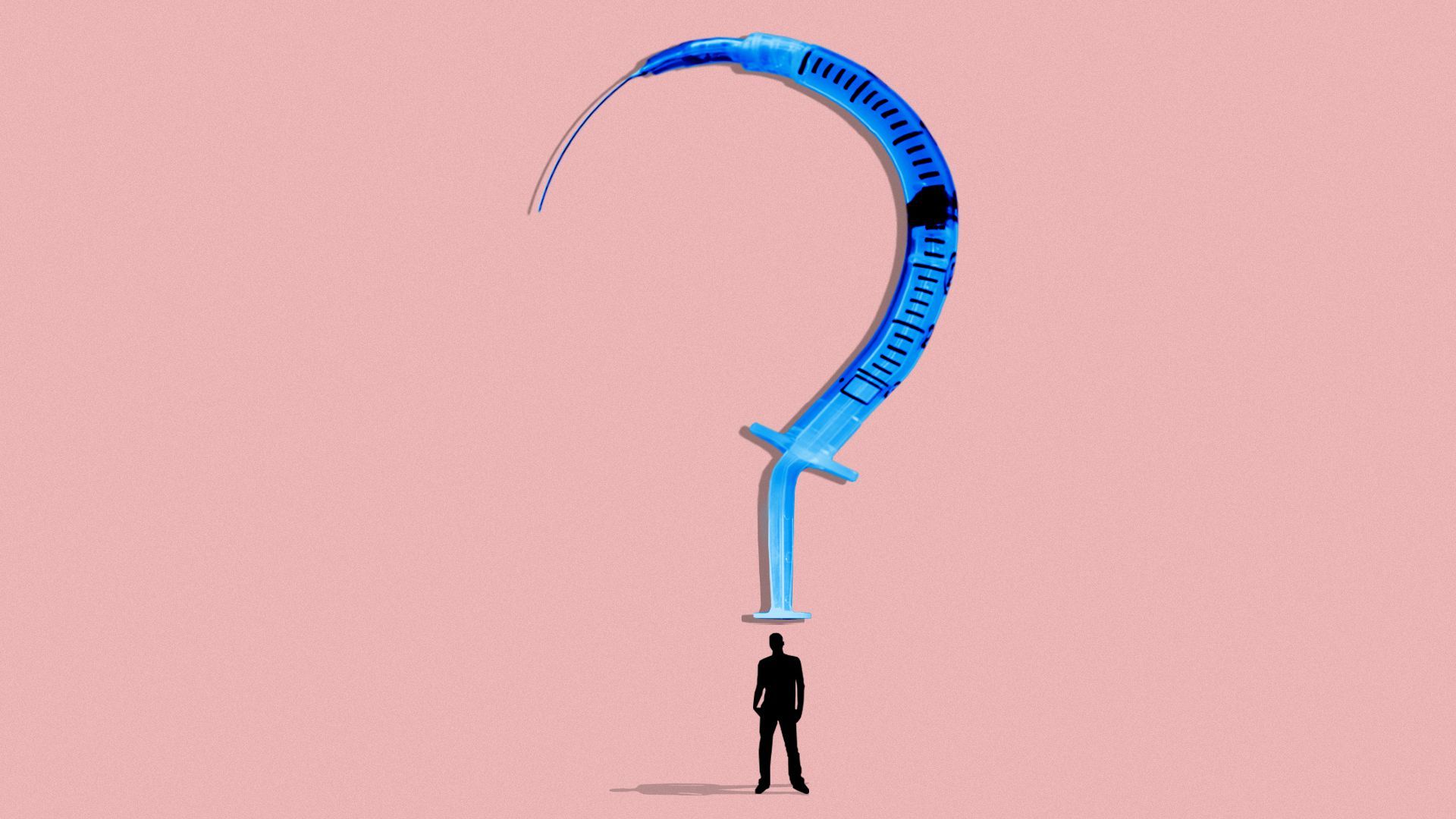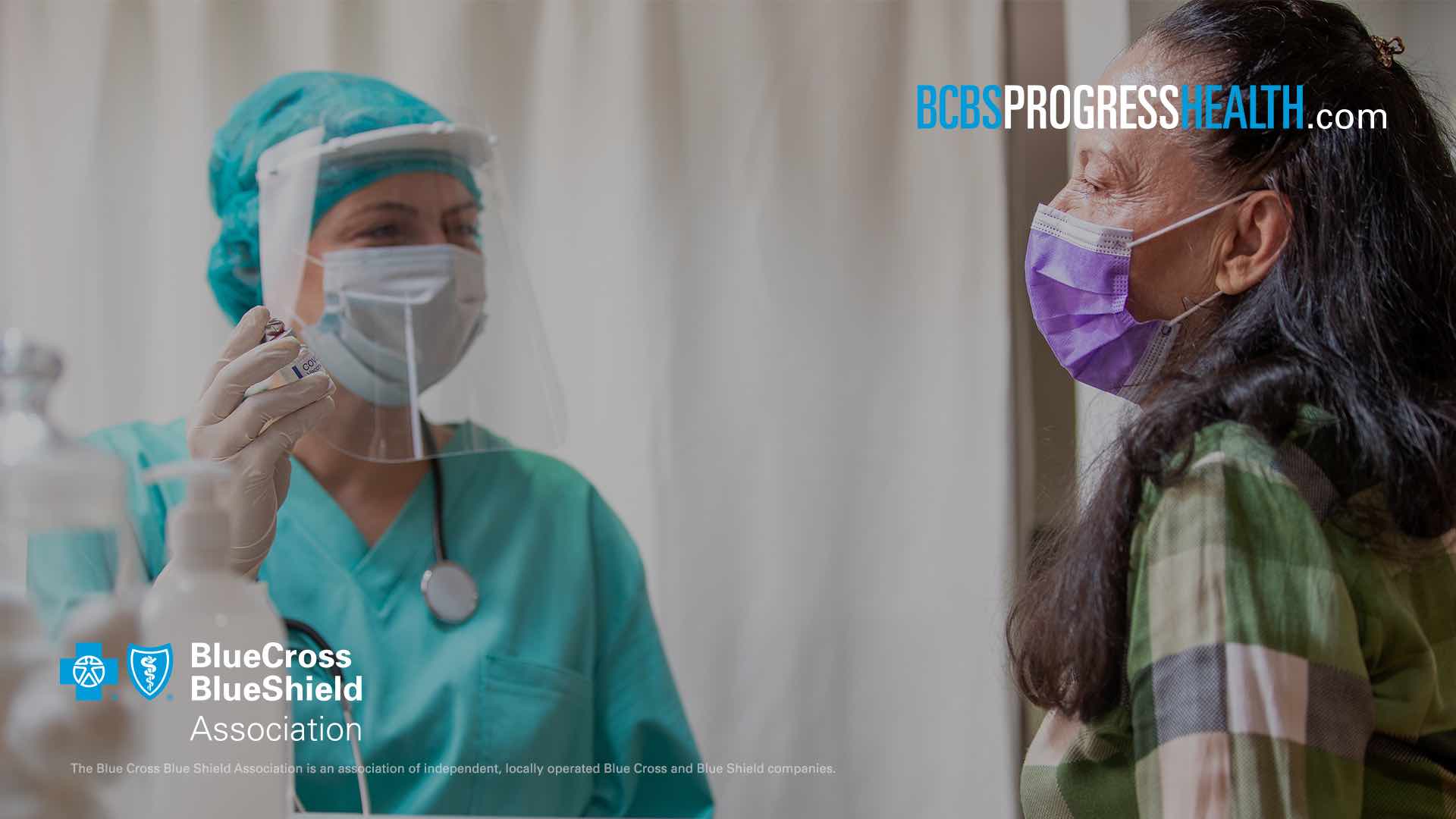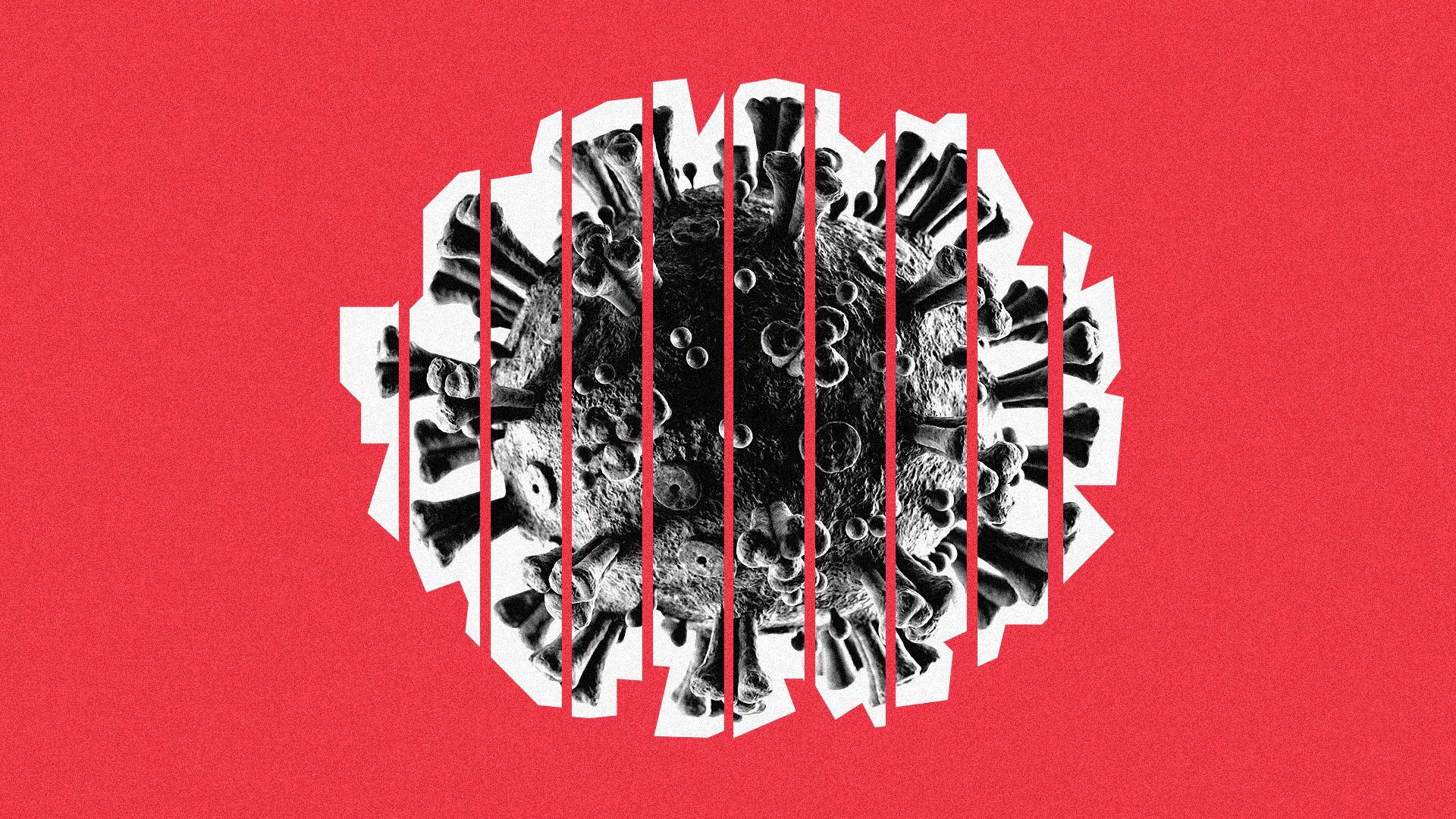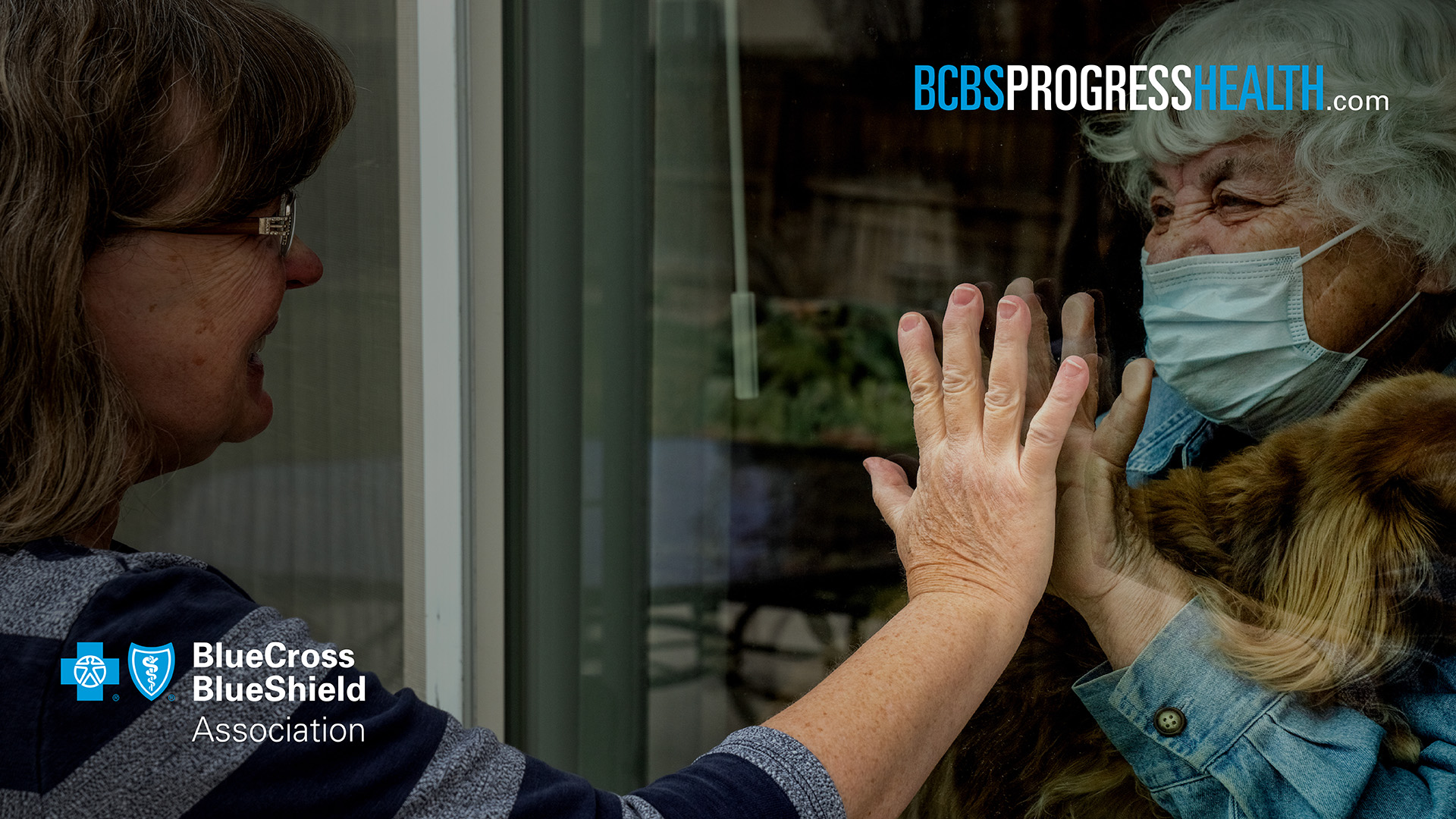| | | | | | | Presented By Blue Cross Blue Shield Association | | | | Vitals | | By Caitlin Owens ·Mar 22, 2021 | | Good morning. Situational awareness: The coronavirus vaccine developed by AstraZeneca/Oxford was found to be 79% effective at preventing symptomatic COVID-19, U.S. trial results show. Today's word count is 1,077, or a 4-minute read. | | | | | | 1 big thing: Biden's next challenge is vaccine diplomacy |  Note: This map represents the total number of vaccines administered, not people vaccinated; Data: Our World in Data; Map: Danielle Alberti/Axios The U.S. accounts for 27% of the world's coronavirus vaccine production, but 0% of the global supply beyond its own borders. Critics and allies alike say it's time for that to change, Axios' Dave Lawler reports. Why it matters: China has gotten a head start on vaccine diplomacy, sending millions of doses all over the globe, including to Latin America. Experts say it's in America's interests to compete in the race to vaccinate the world, and the calls to start doing so are getting louder. Driving the news: The Biden administration took a tentative first step last week, offering around 4 million total doses of the Oxford/AstraZeneca vaccine — which isn't authorized for use in the U.S. — to Mexico and Canada. - The administration has also pledged $4 billion to the global COVAX initiative and more still to help increase supplies to Asia. But it's holding tight to virtually every dose produced in the U.S.
"We're going to have excess supply," said Zeke Emanuel, vice provost for global initiatives at the University of Pennsylvania, who was a member of Biden's coronavirus task force during the transition. - "It would be unethical, and it would be a diplomatic and strategic mistake, to say we need to build up a buffer of 100 million doses while China and Russia are selling to people and saying, you know, 'You guys count,'" he tells Axios.
Where it stands: The U.S. is the world's second-biggest vaccine producer, but its bulk contracts with manufacturers keep doses produced in the U.S. from leaving. What's next: Most of the other major players will still be facing huge domestic needs long after the U.S. has secured enough doses for its entire adult population. That means the tap could soon be flipped on, allowing U.S.-made vaccines to flow all over the world. Go deeper. |     | | | | | | 2. Health giants disclose hefty pandemic paydays | | Top executives at large health care companies have been registering more money during the 2020 pandemic year than before, new company filings show. Why it matters: The coronavirus upended how and when people sought care, but it didn't change the stock-heavy nature of how the industry's power brokers get paid, Axios' Bob Herman reports. By the numbers: Health care CEOs have been posting large 2020 paydays because their stock got more valuable. All numbers are based on actual realized stock gains. - Sam Hazen of HCA Healthcare, a dominant hospital chain that returned coronavirus bailout funds partially due to higher profits, made $84 million (four times as much as 2019), and $66 million of that came from stock.
- David Cordani of Cigna made $79 million (six times as much as 2019), and $73 million of that came from stock.
- Dave Ricks of Eli Lilly made $68 million (twice as much as 2019), and $58 million of that came from stock.
What they're saying: A Cigna spokesperson said Cordani's pay represents his long-held stock and is "aligned to the tremendous value created for our customers, clients, employees and shareholders." - An Eli Lilly spokesperson said Ricks' pay was justified because the drug company "largely met or exceeded its combined financial and strategic goals."
- An HCA spokesperson said the company's "philosophy is centered around creating a strong, positive link between our performance and compensation."
Go deeper: Our 2020 health care executive compensation tracker |     | | | | | | 3. Targeting the "wait and see" crowd |  | | | Illustration: Annelise Capossela/Axios | | | | Republicans and rural Americans are among the strongest vaccine resisters, and strategies are emerging to reach them, but the bigger and quicker payoff will come from focusing on people who are more persuadable. The big picture: A diverse cross-section of Americans are in "wait and see" mode when it comes to the coronavirus vaccine, including many of the communities of color who are at the greatest risk from the coronavirus. And that group has been shrinking, KFF's Drew Altman writes in today's column. By the numbers: The number of Americans who say they'd absolutely refuse to get vaccinated, or will do so only if they're required to, hasn't changed much over the past few months. - 38% of Republicans are in this highly resistant group, as are 28% of rural Americans.
- While the ranks of the resisters have not moved, the number of people taking a "wait and see" approach has been shrinking, as more of those onetime skeptics see that the vaccines are safe. It's fallen from 39% in December to 22% in February.
- This persuadable group includes 34% of Black adults, 33% of young adults and 26% of Latinos.
The bottom line: Efforts to build public confidence in the vaccines can garner early and large returns by emphasizing the "wait and see" population, while hopefully chipping away more slowly at the people who are already dug in. Go deeper. |     | | | | | | A message from Blue Cross Blue Shield Association | | Connecting vulnerable seniors with vaccines | | |  | | | | Blue Cross and Blue Shield companies nationwide are using data and local relationships to help vaccinate millions of at-risk seniors living in underserved and vulnerable communities where COVID-19 vaccines are most inequitable. See how. | | | | | | 4. Vaccine manufacturing has ramped up | | Vaccine makers have drastically increased their manufacturing capacity, and output of the three vaccines authorized in the U.S. is expected to in March be nearly triple the amount produced in February, the Wall Street Journal reports. Why it matters: The faster shots are made, the faster they can be put in arms, and the sooner life can begin to approach normal. Details: Pfizer, its partner BioNTech, and Moderna have figured out ways to speed up the process, including scaling up production lines and making certain raw materials themselves. - The federal government has used the Defense Production Act to help manufacturers access supplies.
- New partnerships with other drug companies — like Johnson & Johnson's with Merck — will also increase total vaccine output.
By the numbers: The monthly output of the Pfizer, Moderna and J&J vaccines is expected to rise from 48 million doses in February to 132 million doses in March, according to estimates by analysts at Evercore ISI. - Around 2.5 million Americans are being vaccinated a day, on average.
- The expected increase in supply should allow 76 million Americans to be fully vaccinated in March, another 75 million to be vaccinated in April and then 89 million in May, according to Evercore estimates.
- The Pfizer and Moderna vaccines require two doses.
|     | | | | | | 5. Catch up quick |  | | | Illustration: Aïda Amer/Axios | | | | One in six U.S. adults has been fully vaccinated for the coronavirus, according to the Centers for Disease Control and Preventions' vaccine tracker. The U.S. distributed the 100 millionth dose of the coronavirus vaccine on Friday, the White House COVID-19 response team confirmed. The U.S. is unlikely to face a fourth wave of the coronavirus, but will likely see plateauing case numbers before they continue to decline, Former FDA commissioner Scott Gottlieb told ABC's "Face the Nation" on Sunday. The city of Miami Beach declared a state of emergency and imposed an 8pm curfew for the entertainment district because spring breakers were gathering in crowds around the city despite the coronavirus pandemic. Several European cities saw anti-lockdown protests on Saturday, with some leading to clashes between demonstrators and police. Spectators from overseas will not be permitted to attend the Summer Olympics in Tokyo, the International Olympic Committee and local organizers announced Saturday. Half of adults across the U.K., roughly 26.8 million people, have received their first dose of the coronavirus vaccine as of Saturday, according to Prime Minister Boris Johnson and Health Minister Matt Hancock. |     | | | | | | A message from Blue Cross Blue Shield Association | | Taking action to fight the pandemic | | |  | | | | Blue Cross and Blue Shield companies have committed more than $7 billion to help the nation address the COVID-19 outbreak by: - Providing premium relief.
- Enhancing access to telehealth.
- Investing to support people in need.
Learn more. | | | | | | Axios thanks our partners for supporting our newsletters.
Sponsorship has no influence on editorial content. Axios, 3100 Clarendon Blvd, Suite 1300, Arlington VA 22201 | | | You received this email because you signed up for newsletters from Axios.
Change your preferences or unsubscribe here. | | | Was this email forwarded to you?
Sign up now to get Axios in your inbox. | | | | Follow Axios on social media:    | | | | | |






No comments:
Post a Comment